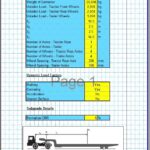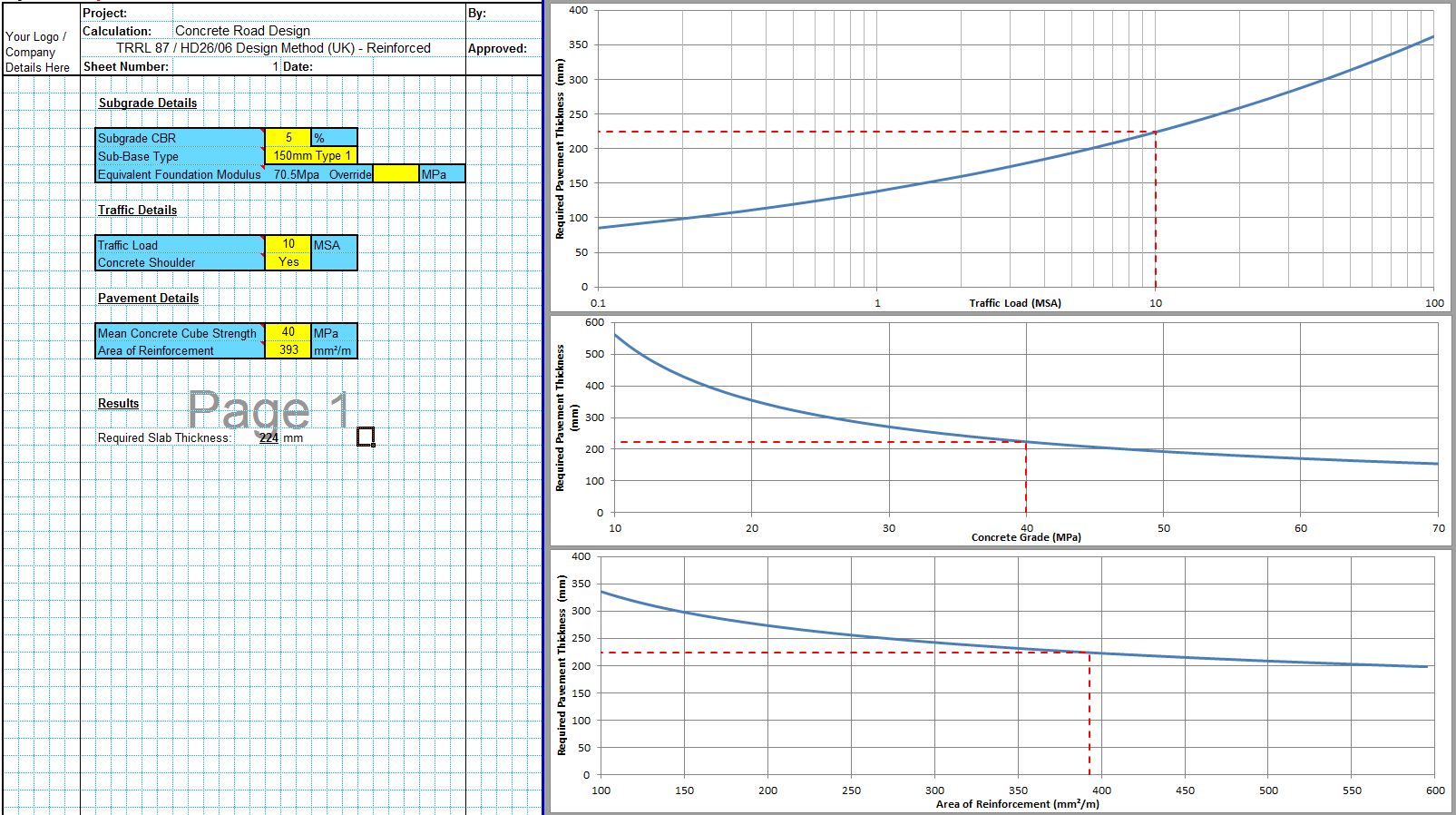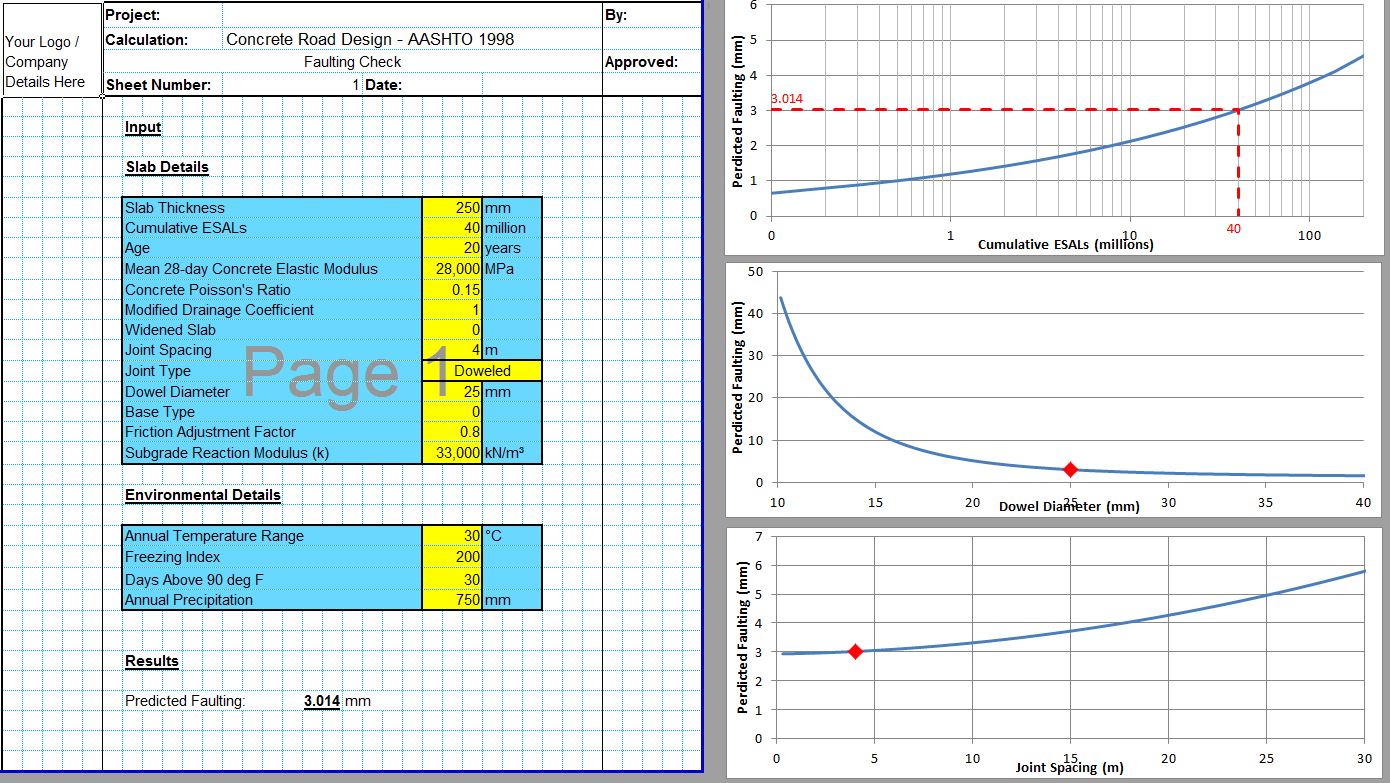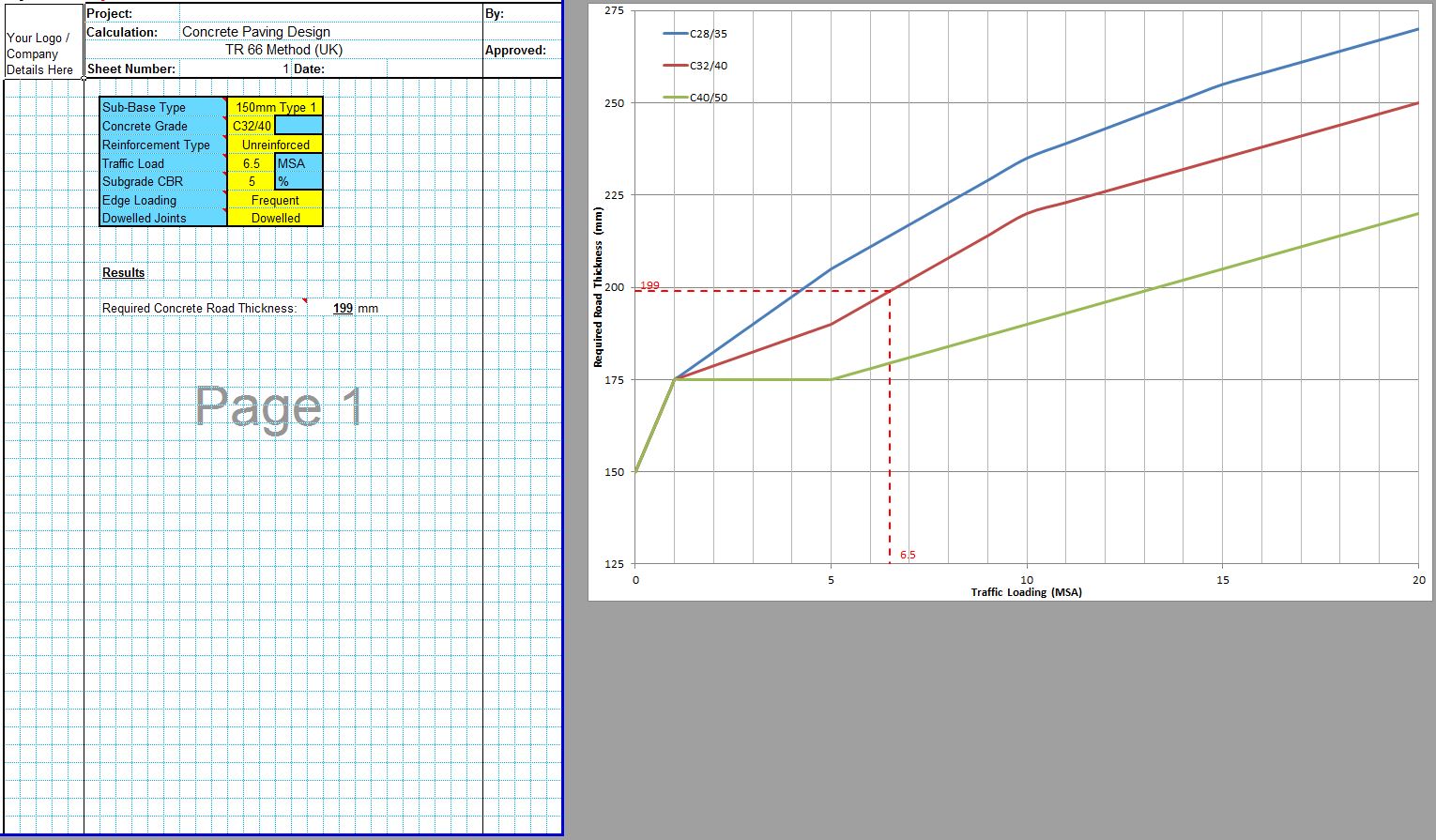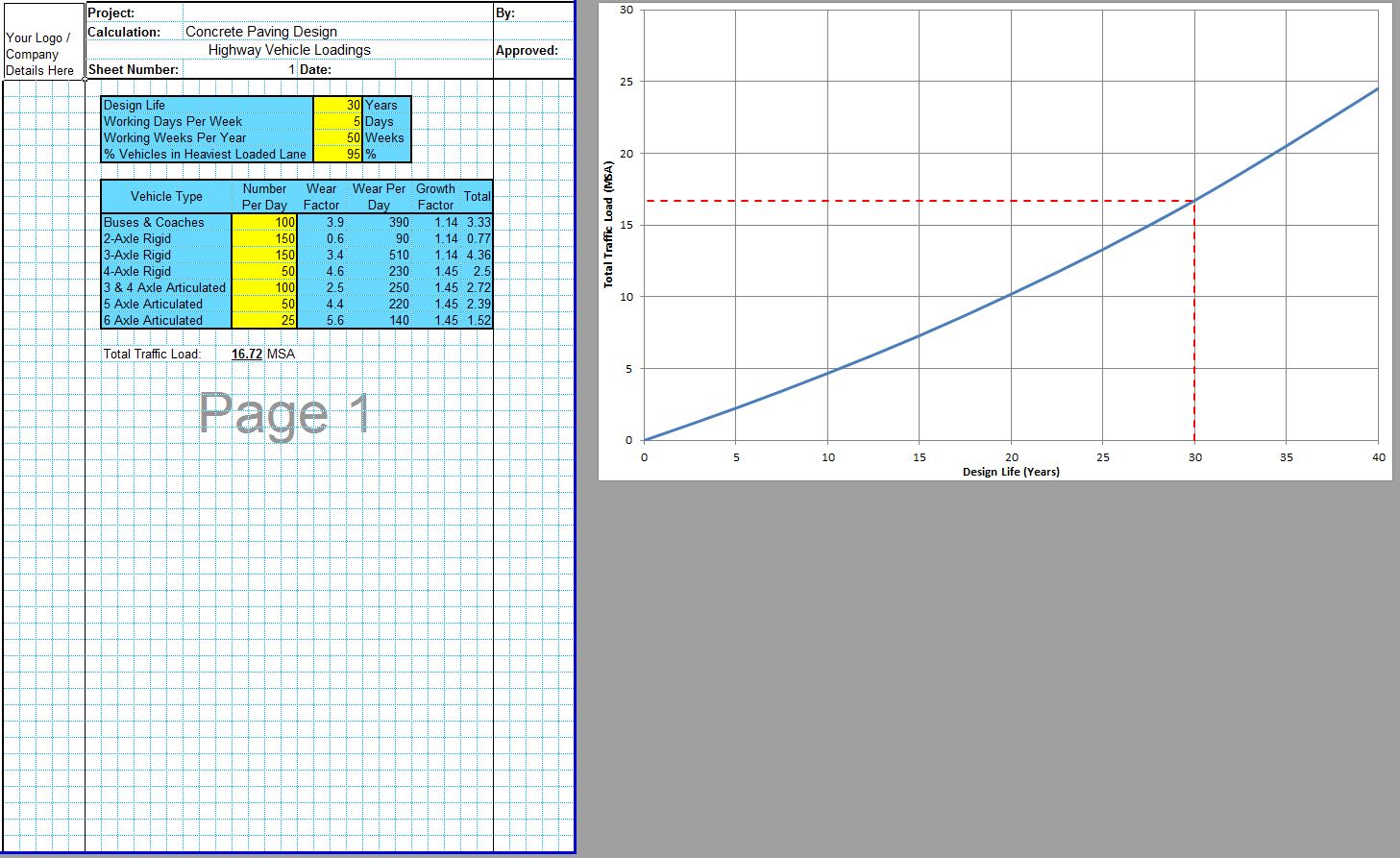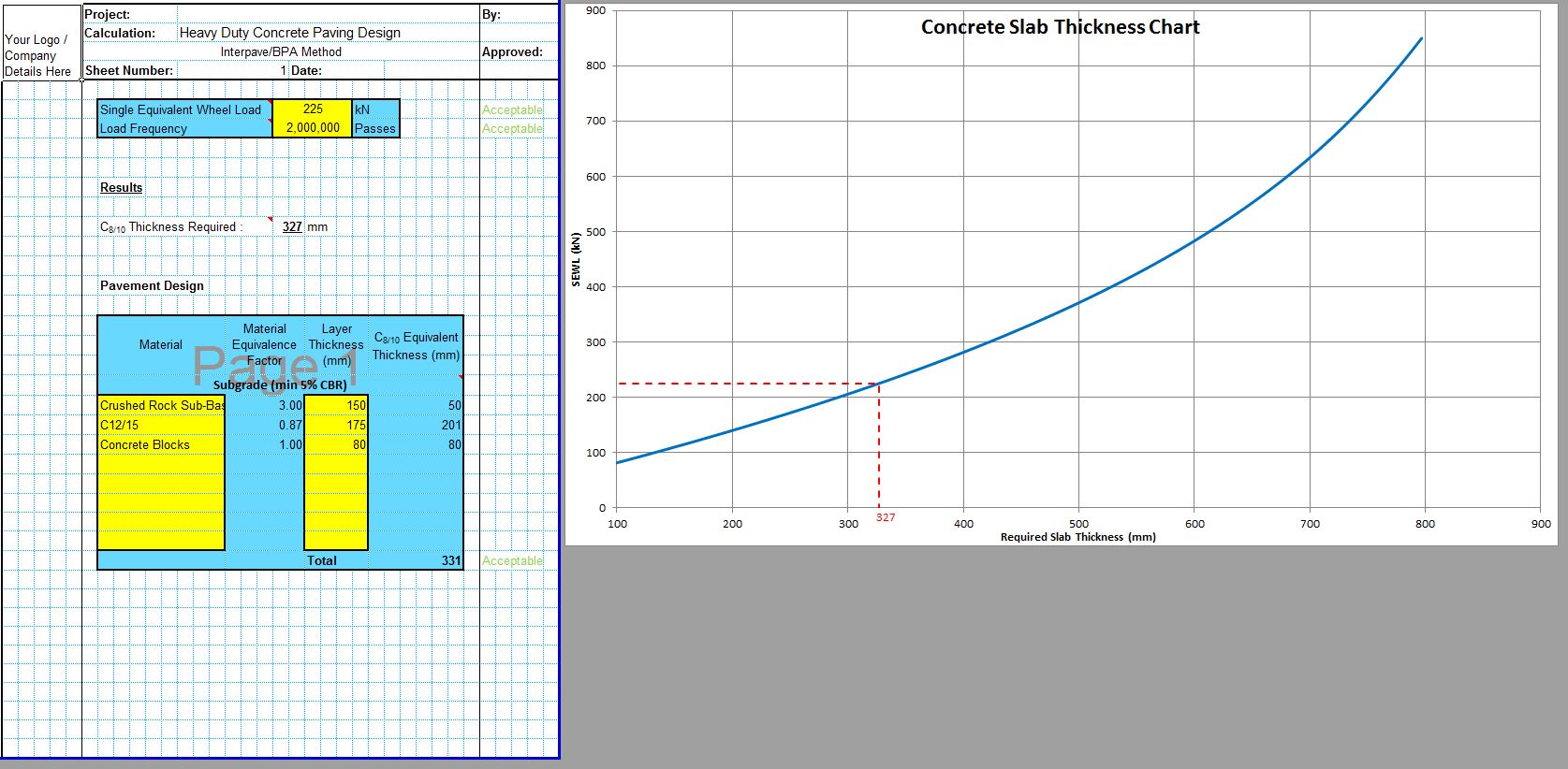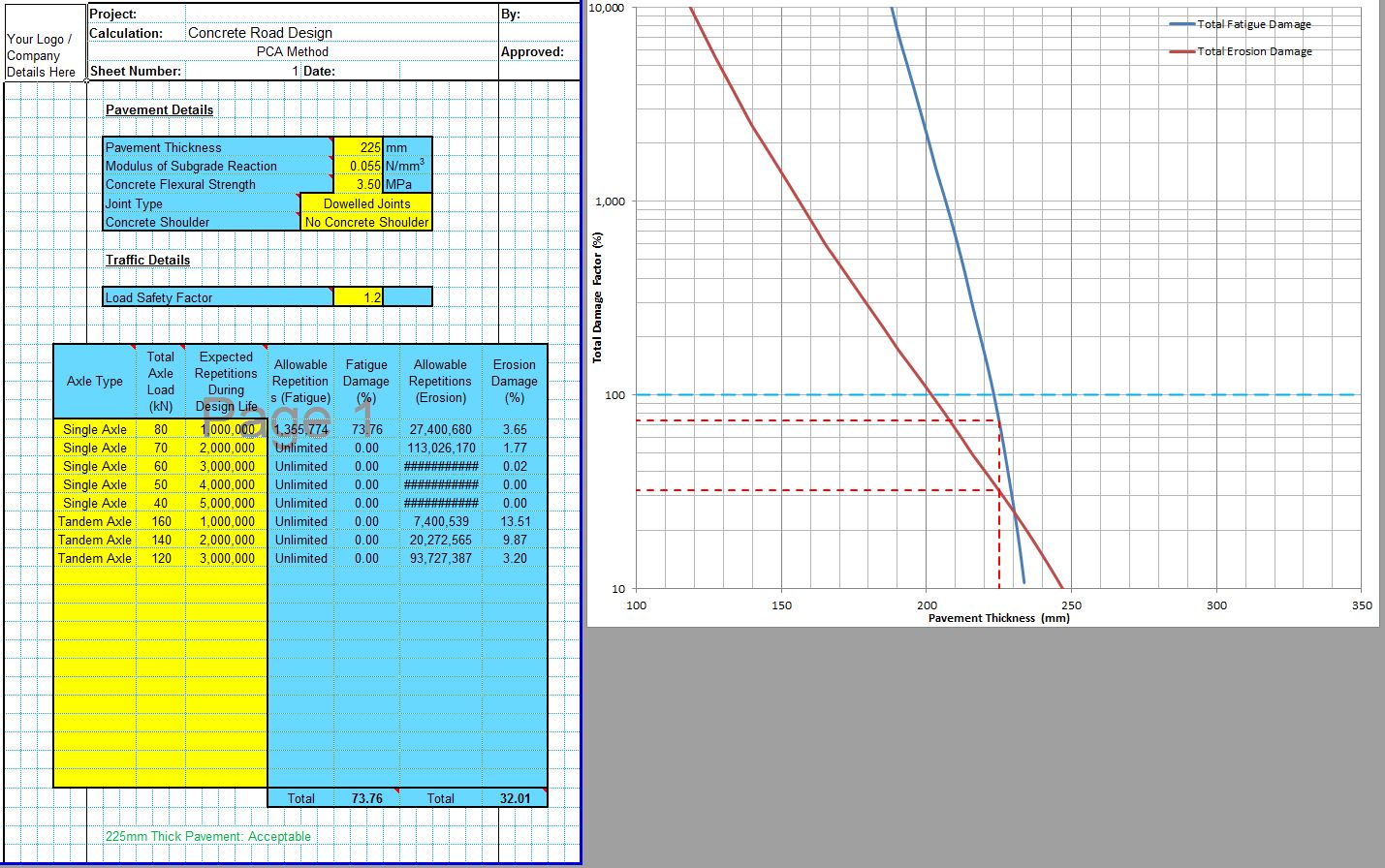The CivilWeb Rigid Pavement Design XLS Suite includes 11 different methods of concrete pavement design. This suite of easy to use design spreadsheets covers every commonly used method of concrete pavement design. It includes methods for the design of concrete road pavements, internal and external industrial pavements and heavy duty pavements.
The CivilWeb Rigid Pavement Design XLS Suite includes 11 separate spreadsheets worth £110, and the Concrete Properties Suite is also included. This suite of spreadsheets can be purchased at the bottom of this page for only £20. The full CivilWeb Pavement Design Excel Spreadsheets Suite including all our flexible pavement design spreadsheets can also be purchased for only £30.
Different Methods of Rigid Pavement Design
There are many different methods of rigid pavement design used in the UK, US and internationally. This is because the problem of a plate supported by a subgrade is a complex one and is dependent on a number of environmental conditions, particularly for external slabs. The CivilWeb Rigid Pavement Design Spreadsheet Suite collates 11 of the most commonly used methods to include all types of rigid pavement design. The four main types of rigid pavement are roads, external industrial pavements, internal industrial pavements and heavy duty pavements.
Rigid Pavement Design Spreadsheet - Roads
The design of concrete roads is usually undertaken using empirical equations developed in the second half of the 20th century. These equations have been found to work well under the regulated loads encountered on highways. Highway loads are relatively small and are controlled by highway regulations. This means that the controlling factor for concrete pavements is fatigue failure from millions of load repetitions. This makes empirical equations suitable for the majority of road conditions.
In the UK this process lead to TRL 87 which outlined concrete road design procedures in the UK. This procedure was expanded many years later to account for the development of continuously reinforced concrete roads with TRL 630.
Attempts have also been made for mechanistic methods of concrete road design using finite element methods. The first and most commonly used method was developed by the Portland Cement Association in the US in the 1980s.
The CivilWeb Rigid Pavement Design XLS Suite includes AASHTO Rigid Pavement Design, the PCA Pavement Design Method, TRL 87 spreadsheet, UK DMRB Road Design Method and the Continuously Reinforced Concrete Pavement Design Spreadsheet covering concrete road design in the US and UK. These are the most commonly used concrete road design methods internationally as well as within the US and UK.
Rigid Pavement Design Calculator - External Industrial Pavements
Industrial roads and pavements are often subjected to similar loads as highway pavements. This is the case wherever the majority of vehicles are also road going vehicles such as HGVs. In the UK a simplified version of the empirical concrete road design equation has been developed for external industrial pavements subjected to highway type loadings. This method was detailed in Concrete Society Technical Report 66. The concrete pavement design spreadsheet suite includes a TR 66 Method spreadsheet following these principles.
Rigid Pavement Design Calculator - Internal Industrial Pavements
Internal industrial pavements include floor slabs for warehouses and other industrial buildings. These pavements are usually subjected to quite different loadings than highway type vehicles. This can include hard wheeled vehicles such as front lift trucks or point or patch type loads from mezzanine floors or racking systems. These loadings and the protection from environmental factors mean that internal industrial floors cannot be designed using the same principles as concrete roads.
Meyerhof developed a plastic analysis solution for rigid pavements under such loadings. Meyerhof assumed that in order for the concrete slab to fail, plastic hinges must form along an assumed failure plane around the load. This method assumed that while the concrete is likely to crack, the cracking is not critical as the slab is protected from water ingress by being indoors.
Concrete Society Technical Report 34 largely follows Meyerhof’s method for internal industrial concrete pavements. The CivilWeb Rigid Pavement Design XLS Suite includes a TR 34 spreadsheet which can be used to complete this method of rigid pavement design.
Other loading types such as linear loads or universally distributed loads are also common for internal concrete pavements such as warehouse floors. Hetenyi developed a method for determining the maximum linear and UDL loads which a rigid pavement can accommodate. The CivilWeb Rigid Pavement Design XLS Suite also includes a spreadsheet covering the Hetenyi method.
Rigid Pavement Design - Heavy Duty Industrial Pavements
External concrete pavements can also be subjected to loadings from wheeled vehicles which are much heavier than highway vehicles. This is common in airports and ports where very heavy wheeled vehicles are often used. In these cases empirical highway equations are not suitable, and the Meyerhof method including extensive cracking is not suitable for moving wheel loads.
In these cases the concrete pavement can be analysed using the Westergaard method. This is a fairly simple method of mechanistic analysis of the pavement. The strength of the pavement is determined and compared with the stresses caused by the loading of the pavement. A fatigue model can then be used to estimate how many repetitions of this load the pavement can accommodate before it will fail in fatigue.
Modern methods of finite element analysis can also be used to assess the stresses caused by the loading of the pavement. This method was used by the British Ports Association to develop a new method of heavy duty pavement design specifically suited to container handling equipment. This heavy duty pavement design method was calibrated using experimental data and is commonly used for the assessment of very heavy loadings.
Linked with all the heavy duty pavement analysis methods is the method of simplifying the wheel loadings into a single Equivalent Single Wheel Load. The CivilWeb Rigid Pavement Design XLS Suite includes a spreadsheet for calculating ESWLs for common heavy vehicles such as FLTs and Trailer/Tractor units.
The CivilWeb Rigid Pavement Design XLS Suite
The CivilWeb Rigid Pavement Design XLS Suite includes;
- TRL 87
- Continuously Reinforced Concrete Pavement Design (TRL 630 Method)
- AASHTO Rigid Pavement Design
- PCA Method
- Concrete Society Technical Report 66 (TR 66 Method)
- Concrete Society Technical Report 34 (TR 34)
- Hetenyi Method
- Equivalent Single Wheel Load (ESWL)
- Westergaard Method
- BPA Heavy Duty Pavement Design Method
- Concrete Pavement Design Fatigue Models
The CivilWeb Rigid Pavement Design XLS Suite also includes the following additional design spreadsheets;
- Concrete Properties Suite
-
Block Paving Design Spreadsheet
-
Dowel Joint Design Spreadsheet
-
Tie Bar Design Spreadsheet
-
Joint Aggregate Interlock Spreadsheet
-
Curing Analysis Spreadsheet
-
Non-Loading Stresses Spreadsheet
-
Punching Shear Design Spreadsheet
The CivilWeb Rigid Pavement Design XLS Suite is available for purchase for just £20. This includes all 11 rigid pavement design methods and detailed user guides for each method.









